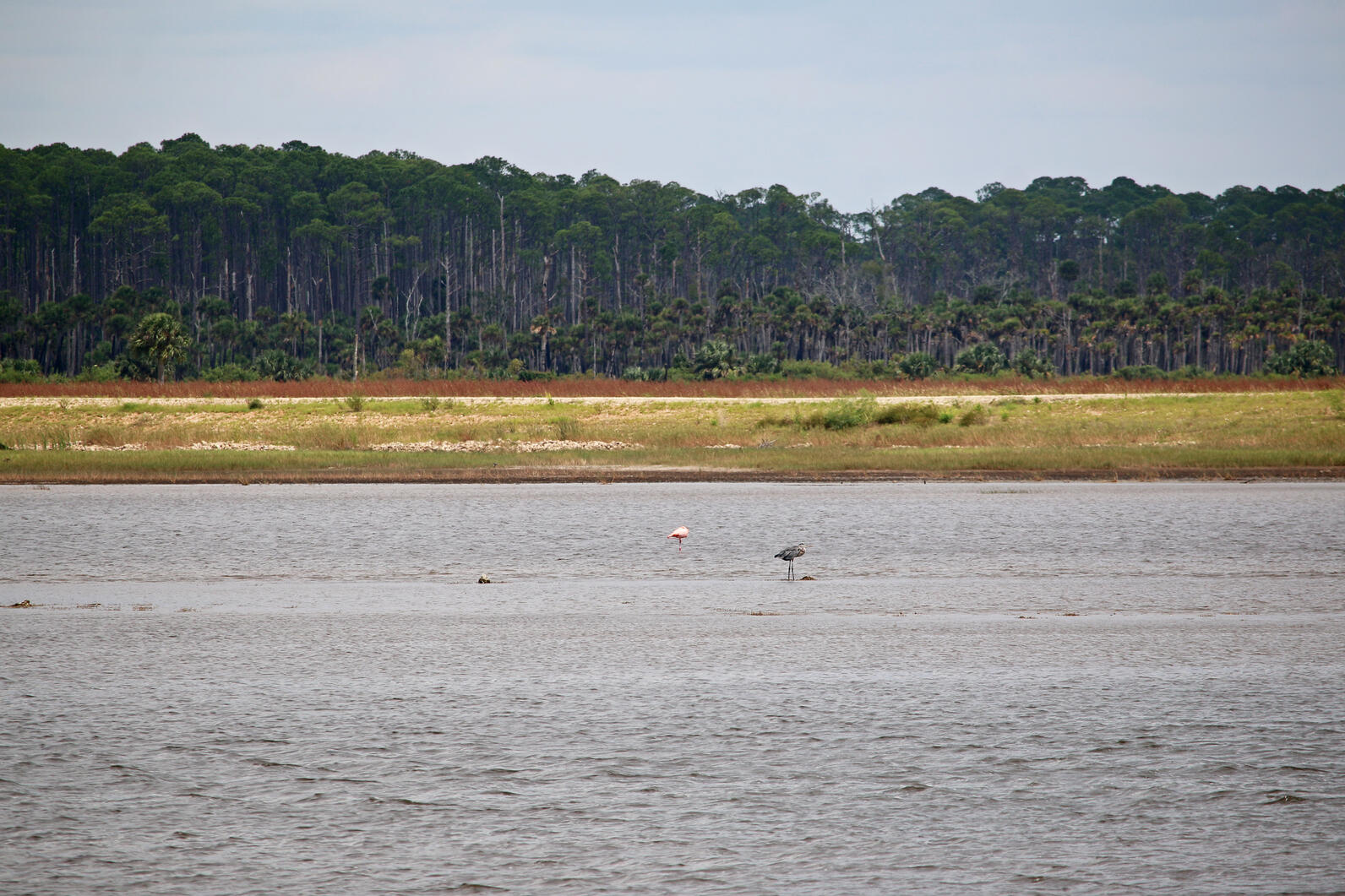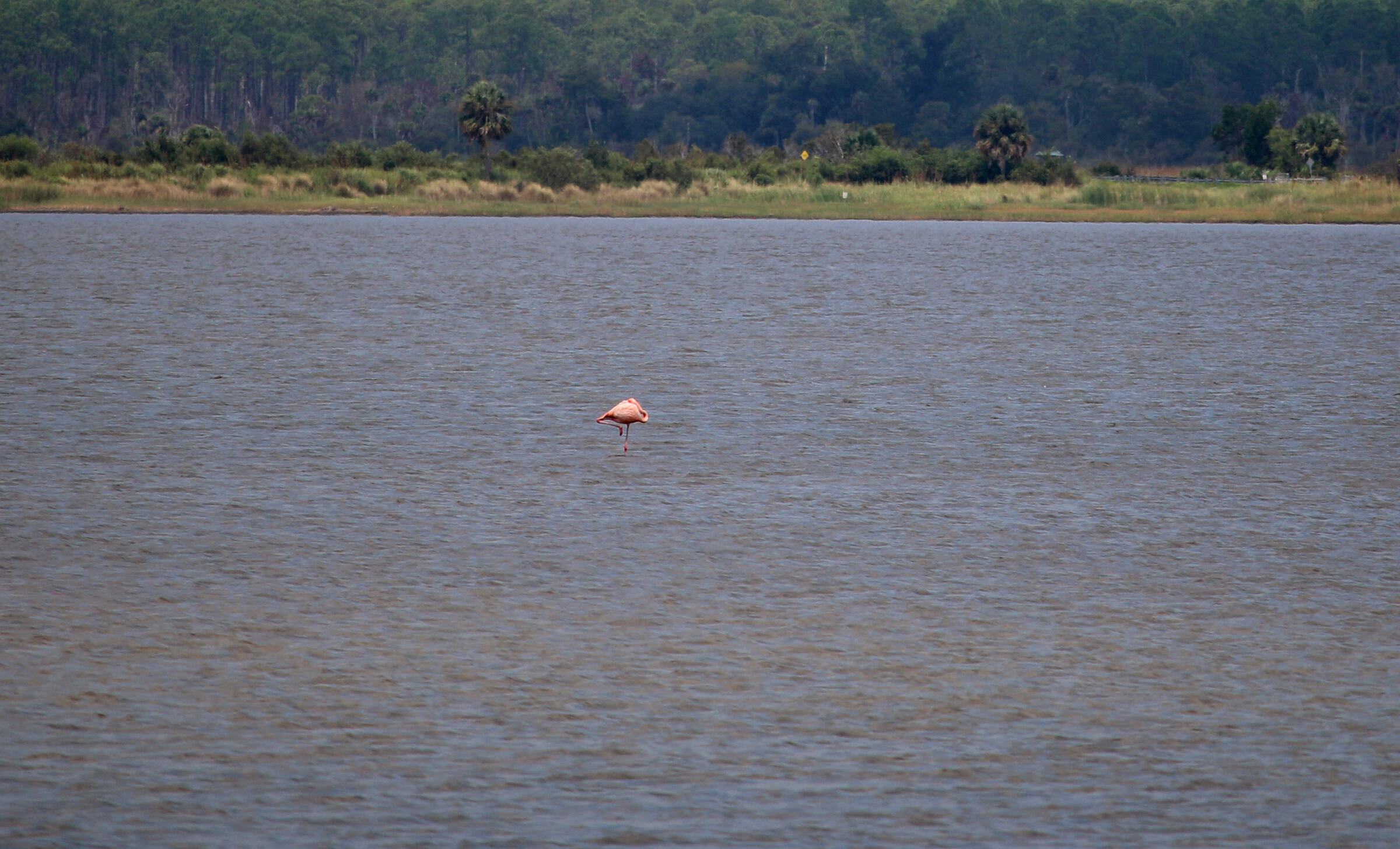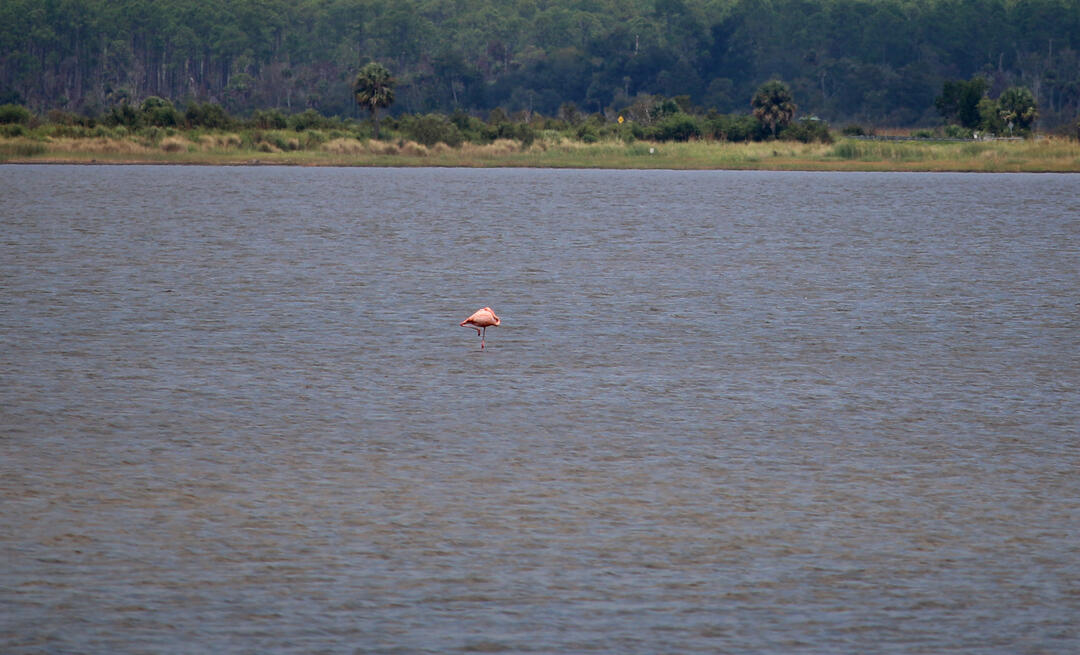On a breezy, sunny, September day, my toddler, husband, and I turned onto the access road of St. Marks National Wildlife Refuge along Florida's Gulf of Mexico. St. Marks has fast become my favorite birding spot, with more than 68,000 acres protecting marsh, forest, and coastline.
Still, I wasn't really expecting to see a plethora of species. For one, it was nearly noon, and I'd already missed the early morning hours and their promise of migrants. Secondly, in September, waterfowl - which would fill the ponds and pools in the coldest months with their diving and dabbling forms - had not yet arrived. I didn't mind though, I love seeing the year-round residents like Great Blue Herons, Great Egrets, Anhingas, Brown Pelicans, and Bald Eagles.
St. Marks has miles and miles of hiking routes, and we opted to push the jogger on a raised trail between pools, a path that arched past tall palm trees and swaying reeds, in addition to open water. I noted Common Gallinules, Red-winged Blackbirds, a deer and her fawn - but mostly I tried to keep my two-year-old from launching himself into the shallows.
We eventually convinced him to sit in the jogger, which allowed for more relaxed birding. My husband soon outpaced me as I stopped to photograph butterflies and flowers. Suddenly, from up ahead, I heard him call my name, followed by just one word: "Quick!"
That could only mean one thing: there was a cool bird ahead.
I ran as fast as I could towards him, standing at the edge of a large pool. Handing me the binoculars, he pointed at a blob in the distance: "I think it's a flamingo."

Flamingos can be synonymous with Florida, but locals and visitors alike more often see plastic lawn replicas than the real thing. In fact, Audubon Florida scientists have been studying this unique bird to learn more about its habits, its origins, and best conservation strategies for the small populations that call the Sunshine State home. Today, estimates peg the Florida flamingo population at about 400 birds.
Swinging the my binoculars up to my eyes to take a look, I noticed the pink color first, but not the tell-tale silhouette of a flamingo. What if it was the much more common Roseate Spoonbill? Or, even more embarassing for my identification skills, a buoy?
We moved around the edge of the pool, working our way to a closer view. Now I focused on the big blob with my camera lens, snapping a few photos and zooming in as far as I could. Nearly jumping in the air, I let out a whoop.
"What?" my husband asked.
"It's Pinky the Flamingo! It's a flamingo!"
Named Pinky by St. Marks National Wildlife Refuge staff, this particular flamingo has been showing up every winter since 2018. Though I knew flamingos were on the Panhandle - a member of our coastal team had seen two after a hurricane rolled through a few weeks before - realizing Pinky had already arrived at St. Marks was a wonderful surprise. Though I spotted Pinky the year before, each time the beautiful bird appears in my viewfinder or binoculars I feel the same rush of excitement. For me, that makes Pinky my favorite Florida bird sighting of 2021.
To protect flamingos, we need to protect the places they need to survive and thrive, conserving critical wetland habitat, improving water quality, and restoring the Everglades. Fingers crossed that I will be able to see Pinky again in 2022!







